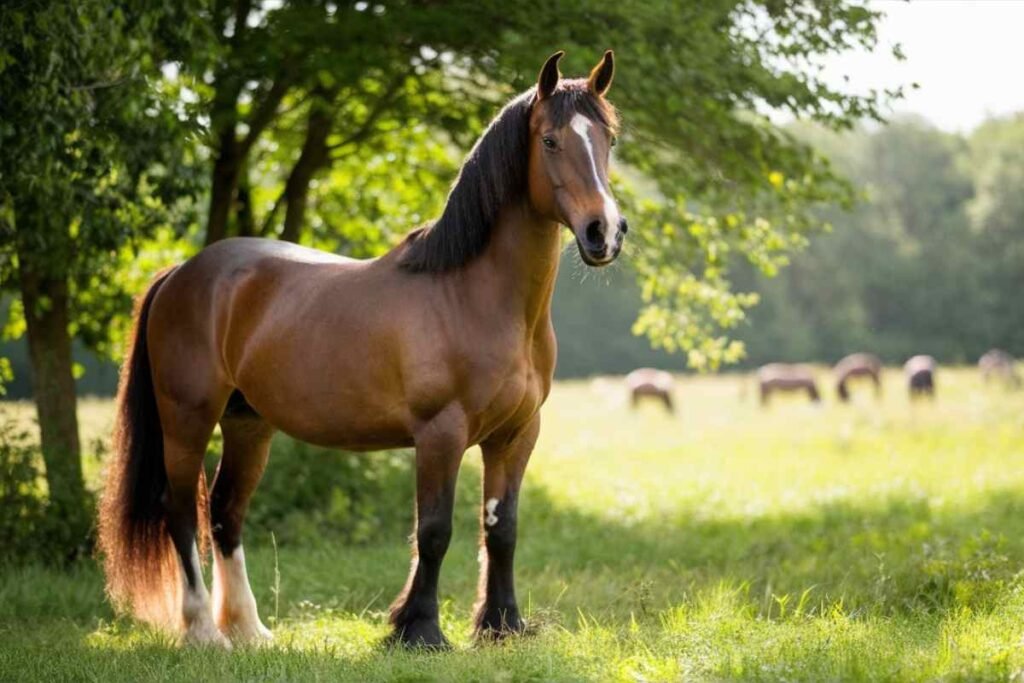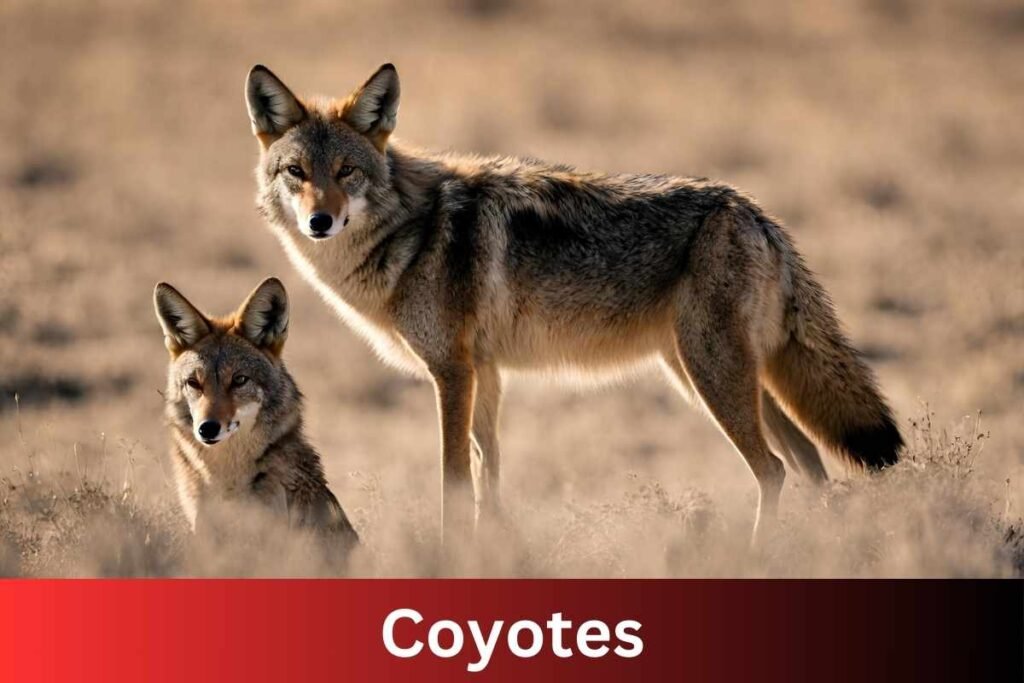Table of Contents
Introduction
The world of horses is as diverse and colorful as it is majestic. Among the myriad of equine colors and patterns, the bay mare stands out with its distinct and striking appearance.
This article delves into the fascinating characteristics, genetics, and cultural significance of the Horses Color Of Bay Mare, offering a comprehensive guide for horse enthusiasts and curious readers alike.
Understanding the Bay Color
The term “bay” refers to a specific color pattern in horses characterized by a reddish-brown body with black points.
These black points typically include the mane, tail, ear edges, and lower legs. The bay color can vary in shade from light to dark, but the presence of black points is a defining feature.
Shades of Bay
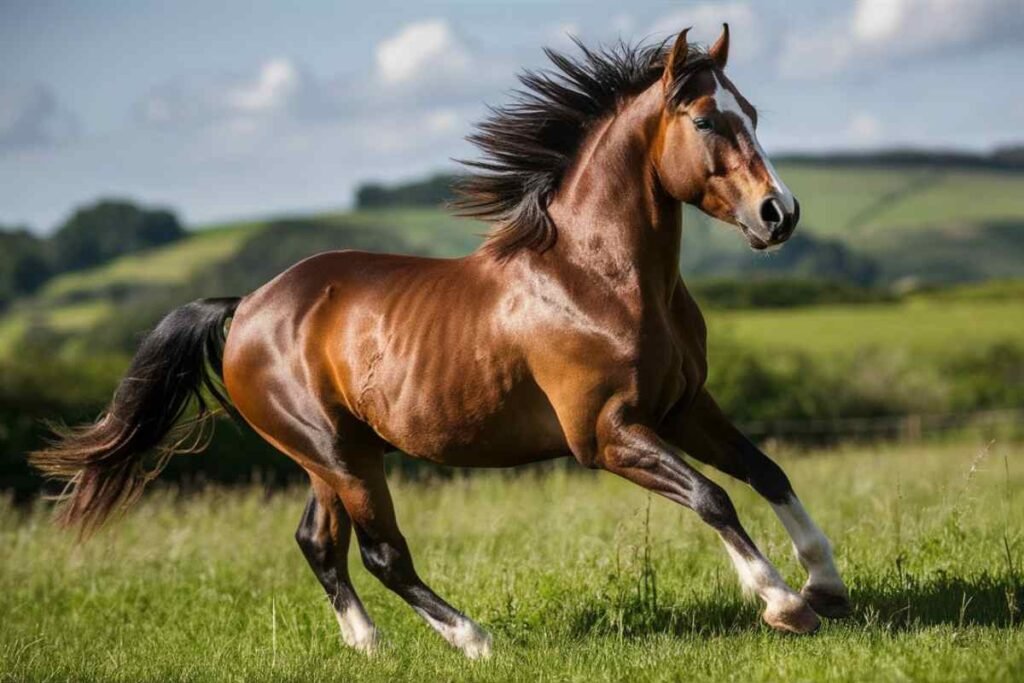
Light Bay
Light bay horses have a lighter, almost golden-brown body with contrasting black points. The overall appearance is bright and eye-catching.
Standard Bay
This is the most common shade, with a rich reddish-brown body and the characteristic black points.
Dark Bay
Also known as “mahogany bay” or “brown bay,” this shade features a deep, dark brown body, sometimes appearing almost black, with the standard black points.
Wild Bay
A rarer shade where the black points are restricted to the lower parts of the legs, giving the horse a more unique appearance.
Genetics Behind the Bay Color
The bay color in horses is determined by the interaction of multiple genes, primarily the Extension (E) and Agouti (A) genes. The Extension gene controls the production of black or red pigment, while the Agouti gene dictates the distribution of black pigment on the horse’s body.
Extension Gene (E)
The presence of the dominant E allele produces black pigment, while the recessive e allele results in red pigment.
Agouti Gene (A)
The dominant A allele restricts black pigment to the points, resulting in a bay horse. The recessive a allele allows black pigment to be distributed throughout the body, leading to a black horse.
For a horse to be bay, it must have at least one dominant E allele (EE or Ee) and one dominant A allele (AA or Aa).
Characteristics of a Bay Mare
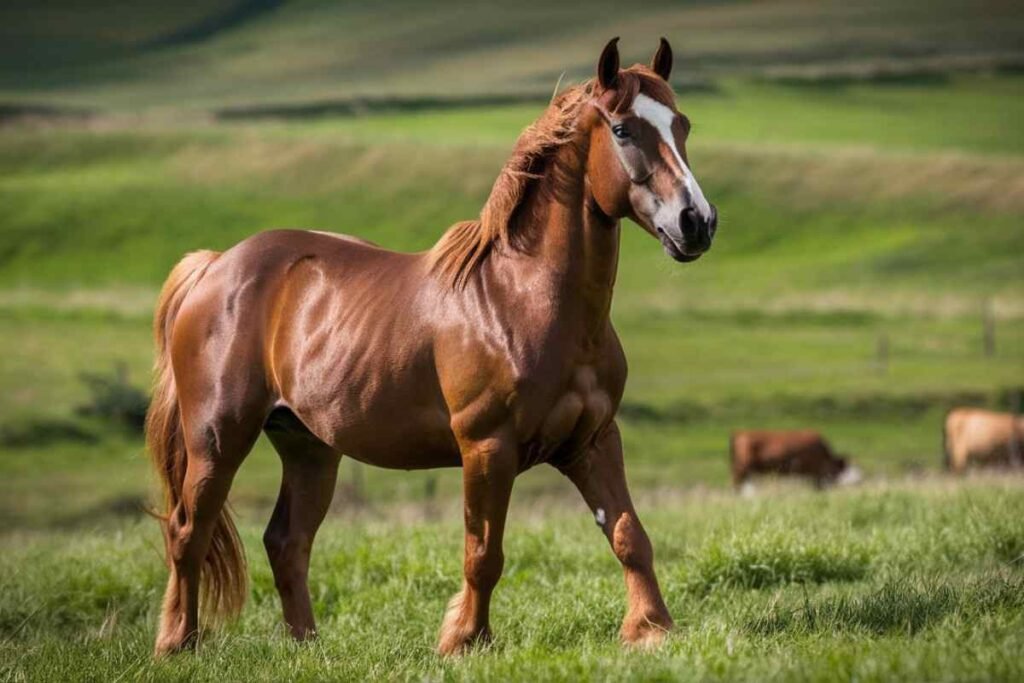
A mare is a female horse aged four years or older. Bay mares possess the same color characteristics as bay horses of other sexes, but their gender and age can influence certain aspects of their behavior and management.
Physical Attributes
Coat
The bay mare’s coat is smooth and glossy, especially when well-groomed and healthy. Regular grooming enhances the shine and richness of the bay color.
Mane and Tail
The black mane and tail provide a striking contrast to the reddish-brown body, adding to the mare’s beauty.
Hooves
Often dark in color, complementing the black points of the bay mare.
Temperament
Bay mares, like other mares, can exhibit a range of temperaments. They are known for their intelligence, strong will, and sometimes a bit of stubbornness.
Proper training and handling are essential to develop a positive and cooperative relationship with a bay mare.
Care and Management
Maintaining the health and well-being of a bay mare involves regular care, proper nutrition, and attention to both physical and mental health.
Grooming
Brushing
Regular brushing helps remove dirt and loose hair, keeping the coat clean and shiny.
Mane and Tail Care
Detangling and conditioning the mane and tail prevent breakage and maintain their health.
Hoof Care
Regular cleaning and trimming of the hooves are crucial to prevent infections and maintain soundness.
Nutrition
A balanced diet tailored to the mare’s age, workload, and health status is vital. This includes a mix of forages, grains, and supplements as needed. Adequate hydration and access to clean water are equally important.
The Cultural Significance of Bay Mares
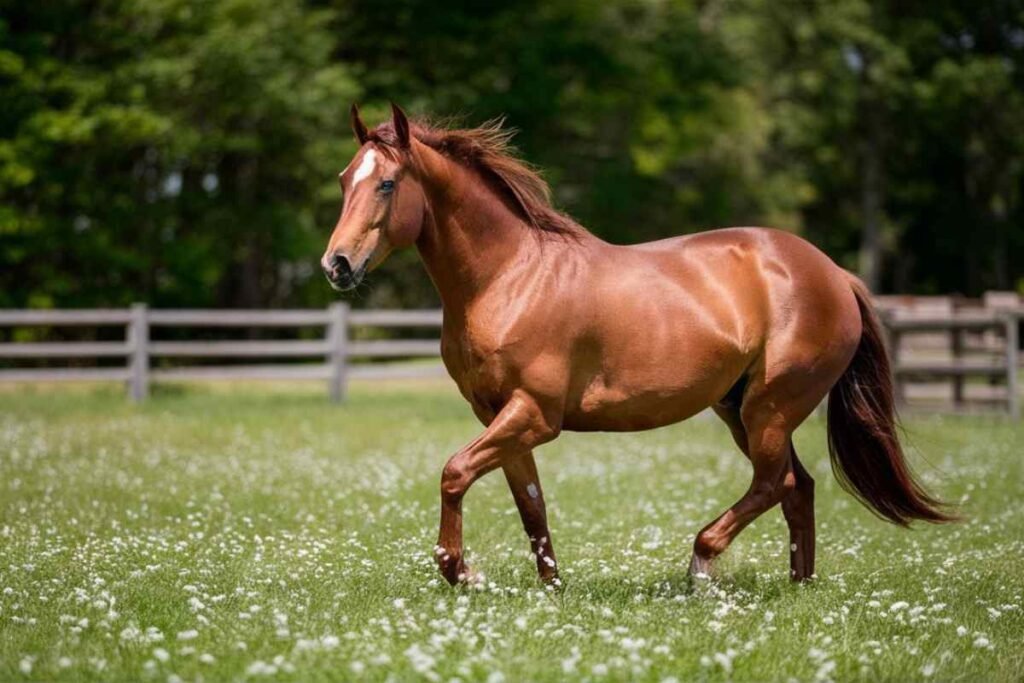
Bay horses, including bay mares, have been celebrated in various cultures throughout history. They are often depicted in art, literature, and folklore, symbolizing strength, beauty, and nobility.
Historical References
Warhorses
Bay horses were favored as warhorses due to their striking appearance and perceived vigor.
Mythology
In some mythologies, bay horses are considered to bring good fortune and are associated with gods and heroes.
Conclusion
Horses Color Of Bay Mare, with its striking reddish-brown coat and contrasting black points, embodies both beauty and versatility in the equine world.
From its rich genetic background to its prominent role in culture and history, the bay mare stands as a testament to the elegance and strength that horses can exhibit.
Understanding the nuances of the bay color and the care required for bay mares enhances our appreciation of these remarkable animals, highlighting their unique place in the tapestry of equestrian traditions and practices.
Whether admired for their appearance or valued for their abilities, bay mares continue to captivate and inspire horse enthusiasts around the world.
FAQs
What is a Horses Color Of Bay Mare?
A bay mare is a female horse aged four years or older with a reddish-brown body and black points on the mane, tail, ear edges, and lower legs.
How can you tell if a horse is bay?
A bay horse has a reddish-brown coat with black points on the mane, tail, ears, and lower legs. The coat can range from light to dark shades of brown.
What are the different shades of bay?
The shades include Light Bay (golden-brown), Standard Bay (rich reddish-brown), Dark Bay (deep brown or mahogany), and Wild Bay (black points restricted to the lower legs).
What genes determine a bay horse’s color?
The bay color is determined by the Extension (E) gene, which produces black pigment, and the Agouti (A) gene, which restricts black pigment to the points.
How do bay mares differ from bay stallions?
Bay mares and stallions have the same color characteristics, but mares might exhibit different temperaments and require different management due to their reproductive status.
What care does a bay mare need?
Bay mares require regular grooming, including brushing, mane and tail care, and hoof maintenance. A balanced diet and adequate hydration are also essential.
Are bay mares known for any specific traits?
Bay mares are often noted for their beauty, intelligence, and strong-willed nature. Proper training is essential to develop their potential.
What is the cultural significance of bay horses?
Bay horses have been celebrated in art, literature, and mythology for their beauty and strength, often symbolizing nobility and good fortune.
